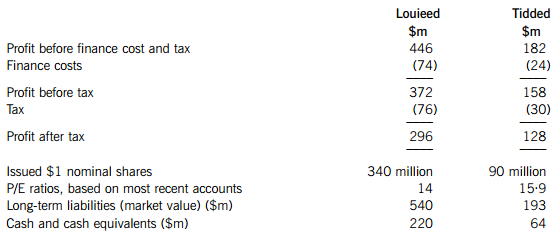 题目内容
(请给出正确答案)
题目内容
(请给出正确答案)
1 Rowlands & Medeleev (R&M), a major listed European civil engineering company, was successful in its bid to become
principal (lead) contractor to build the Giant Dam Project in an East Asian country. The board of R&M prided itself in
observing the highest standards of corporate governance. R&M’s client, the government of the East Asian country, had
taken into account several factors in appointing the principal contractor including each bidder’s track record in large
civil engineering projects, the value of the bid and a statement, required from each bidder, on how it would deal with
the ‘sensitive issues’ and publicity that might arise as a result of the project.
The Giant Dam Project was seen as vital to the East Asian country’s economic development as it would provide a
large amount of hydroelectric power. This was seen as a ‘clean energy’ driver of future economic growth. The
government was keen to point out that because hydroelectric power did not involve the burning of fossil fuels, the
power would be environmentally clean and would contribute to the East Asian country’s ability to meet its
internationally agreed carbon emission targets. This, in turn, would contribute to the reduction of greenhouse gases
in the environment. Critics, such as the environmental pressure group ‘Stop-the-dam’, however, argued that the
project was far too large and the cost to the local environment would be unacceptable. Stop-the-dam was highly
organised and, according to press reports in Europe, was capable of disrupting progress on the dam by measures such
as creating ‘human barriers’ to the site and hiding people in tunnels who would have to be physically removed before
proceeding. A spokesman for Stop-the-dam said it would definitely be attempting to resist the Giant Dam Project when
construction started.
The project was intended to dam one of the region’s largest rivers, thus creating a massive lake behind it. The lake
would, the critics claimed, not only displace an estimated 100,000 people from their homes, but would also flood
productive farmland and destroy several rare plant and animal habitats. A number of important archaeological sites
would also be lost. The largest community to be relocated was the indigenous First Nation people who had lived on
and farmed the land for an estimated thousand years. A spokesman for the First Nation community said that the ‘true
price’ of hydroelectric power was ‘misery and cruelty’. A press report said that whilst the First Nation would be unlikely
to disrupt the building of the dam, it was highly likely that they would protest and also attempt to mobilise opinion in
other parts of the world against the Giant Dam Project.
The board of R&M was fully aware of the controversy when it submitted its tender to build the dam. The finance
director, Sally Grignard, had insisted on putting an amount into the tender for the management of ‘local risks’. Sally
was also responsible for the financing of the project for R&M. Although the client was expected to release money in
several ‘interim payments’ as the various parts of the project were completed to strict time deadlines, she anticipated
a number of working capital challenges for R&M, especially near the beginning where a number of early stage costs
would need to be incurred. There would, she explained, also be financing issues in managing the cash flows to R&M’s
many subcontractors. Although the major banks financed the client through a lending syndicate, R&M’s usual bank
said it was wary of lending directly to R&M for the Giant Dam Project because of the potential negative publicity that
might result. Another bank said it would provide R&M with its early stage working capital needs on the understanding
that its involvement in financing R&M to undertake the Giant Dam Project was not disclosed. A press statement from
Stop-the-dam said that it would do all it could to discover R&M’s financial lenders and publicly expose them. Sally
told the R&M board that some debt financing would be essential until the first interim payments from the client
became available.
When it was announced that R&M had won the contract to build the Giant Dam Project, some of its institutional
shareholders contacted Richard Markovnikoff, the chairman. They wanted reassurance that the company had fully
taken the environmental issues and other risks into account. One fund manager asked if Mr Markovnikoff could
explain the sustainability implications of the project to assess whether R&M shares were still suitable for his
environmentally sensitive clients. Mr Markovnikoff said, through the company’s investor relations department, that he
intended to give a statement at the next annual general meeting (AGM) that he hoped would address these
environmental concerns. He would also, he said, make a statement on the importance of confidentiality in the
financing of the early stage working capital needs.
(a) Any large project such as the Giant Dam Project has a number of stakeholders.
Required:
(i) Define the terms ‘stakeholder’ and ‘stakeholder claim’, and identify from the case FOUR of R&M’s
external stakeholders as it carries out the Giant Dam Project; (6 marks)
 如果结果不匹配,请 联系老师 获取答案
如果结果不匹配,请 联系老师 获取答案


 更多“1 Rowlands & Medeleev (R&a…”相关的问题
更多“1 Rowlands & Medeleev (R&a…”相关的问题

















